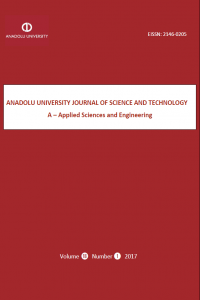COMPARISON OF THE MECHANICAL RESPONSE OF POROUS TI-6AL-4V ALLOYS PRODUCED BY DIFFERENT COMPACTION TECHNIQUES
Abstract
Porous Ti-6Al-4V alloys are attractive candidates as implant materials due to their good biocompatibility combined with the porous structure leading to increased osseointegration and decreased stiffness. Accordingly, different processing techniques were employed for the production of Ti-6Al-4V foams in the literature. Among these techniques, sintering with space holder is used to produce porous Ti-6Al-4V alloys in this study. Magnesium was employed as the space holder material because of its relatively low boiling point as well as high oxygen affinity. Two different compaction techniques, die compaction with hydraulic pressing and cold isostatic pressing (CIP), were employed for obtaining green compacts. Both spherical and nonspherical Ti-6Al-4V powders were used to investigate the effect of powder shape on compaction. Processed foams were characterized in terms of both microstructural and mechanical aspects in order to investigate the effect of pressing conditions in combination with powder characteristics. It was observed that NS-CIP foam, which was produced by compacting nonspherical powders by cold isostatic press, has the highest strength. However, the S-DP foam, which was produced by die-pressing of spherical powders, has the highest toughness.
Abstract
Details
| Subjects | Engineering |
|---|---|
| Journal Section | Articles |
| Authors | |
| Publication Date | March 31, 2017 |
| Published in Issue | Year 2017 Volume: 18 Issue: 1 |


